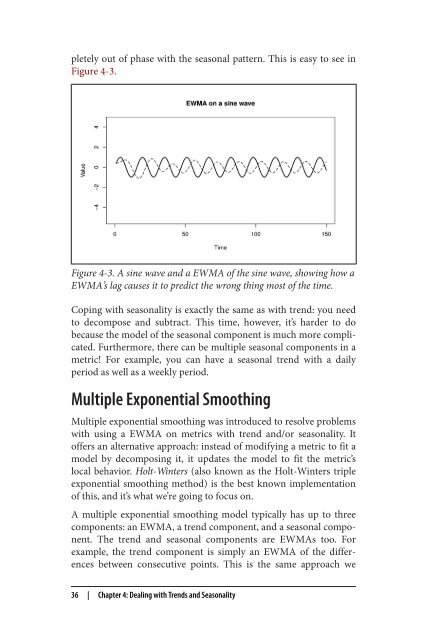Anomaly Detection for Monitoring
anomaly-detection-monitoring
anomaly-detection-monitoring
Create successful ePaper yourself
Turn your PDF publications into a flip-book with our unique Google optimized e-Paper software.
pletely out of phase with the seasonal pattern. This is easy to see in<br />
Figure 4-3.<br />
Figure 4-3. A sine wave and a EWMA of the sine wave, showing how a<br />
EWMA’s lag causes it to predict the wrong thing most of the time.<br />
Coping with seasonality is exactly the same as with trend: you need<br />
to decompose and subtract. This time, however, it’s harder to do<br />
because the model of the seasonal component is much more complicated.<br />
Furthermore, there can be multiple seasonal components in a<br />
metric! For example, you can have a seasonal trend with a daily<br />
period as well as a weekly period.<br />
Multiple Exponential Smoothing<br />
Multiple exponential smoothing was introduced to resolve problems<br />
with using a EWMA on metrics with trend and/or seasonality. It<br />
offers an alternative approach: instead of modifying a metric to fit a<br />
model by decomposing it, it updates the model to fit the metric’s<br />
local behavior. Holt-Winters (also known as the Holt-Winters triple<br />
exponential smoothing method) is the best known implementation<br />
of this, and it’s what we’re going to focus on.<br />
A multiple exponential smoothing model typically has up to three<br />
components: an EWMA, a trend component, and a seasonal component.<br />
The trend and seasonal components are EWMAs too. For<br />
example, the trend component is simply an EWMA of the differences<br />
between consecutive points. This is the same approach we<br />
36 | Chapter 4: Dealing with Trends and Seasonality




